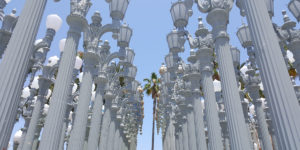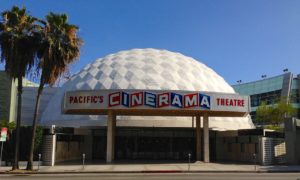If we had to choose a single building to represent an icon of modern architecture in Los Angeles, it would undoubtedly be the Malin House (Chemosphere). An octagon perched atop a nine-foot-tall and five-foot-wide concrete column, it resembles a flying saucer hovering over the Hollywood Hills. The Chemosphere
This unparalleled house was designed in 1960 by the innovative architect John Lautner for Leonard Malin, a young aerospace engineer with a steep plot of land and $30,000 to spend on a house. Thanks to Lautner’s ingenious design and sponsorships from companies like Chem Seal (which provided experimental coatings and was rewarded with the building’s naming), Malin achieved his dream and lived with his family in this unique home.
The Chemosphere continued to be used as a residence for several decades and then deteriorated in the 1990s when owners began renting the house out for parties. In 2000, German art publisher Benedikt Taschen bought the Chemosphere when he moved the American headquarters of Taschen Publishing to Los Angeles from New York. Taschen has extensively renovated the house’s interior and now uses it as his residence in Los Angeles.
Access to this single-story house is via a private funicular, and a concrete patio connects one side of it to the steep, lush vegetation of the hillside. Most of the building improbably rises from the north side of the Hollywood Hills, with windows running its entire diameter to provide a stunning view of the San Fernando Valley.
The Chemosphere was declared a Los Angeles Historic-Cultural Monument in 2004. It was also included in a list of the top 10 houses of all time in Los Angeles in a survey by Los Angeles Times experts in December 2008.
The Chemosphere, once considered “the most modern home in the world,” is located at 7776 Torreyson Drive off Mulholland Drive. Although it is a private residence and its interior is not open to public tours, there are good views of the house from Torreyson Drive.
This unique house featured prominently in Brian De Palma‘s film “Body Double” (1981) and was recreated in the studio for the movie ‘Charlie’s Angels’ (2000). It also appeared in the ‘A Fish Called Selma’ episode of ‘The Simpsons‘. In this episode, the Chemosphere was the home of Troy McClure.
The Chemosphere’s impact extends beyond its groundbreaking design and stunning location. It has inspired architects and designers worldwide, showcasing how structural and geographical challenges can be overcome with creativity and boldness. Its appearances in various popular culture works, from movies to animated series, reflect its iconic status and enduring impact on the public’s imagination. The Chemosphere not only exemplifies Lautner’s architectural genius but also serves as a testament to the fusion of form, function, and futuristic vision in mid-20th-century design.



